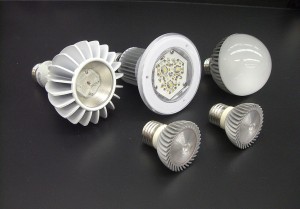 Over 20 states are reviewing their net-metering rules for solar energy and at least 10 are conducting value of distributed generation studies. But is this just delaying the inevitable — that states must embrace policies that promote energy conservation technologies rather than sustain their traditional grids? And are solar energy systems the only culprit?
Over 20 states are reviewing their net-metering rules for solar energy and at least 10 are conducting value of distributed generation studies. But is this just delaying the inevitable — that states must embrace policies that promote energy conservation technologies rather than sustain their traditional grids? And are solar energy systems the only culprit?
In fact, energy conservation technologies have already significantly impacted baseload demand patterns. According to the Department of Energy (DOE), light-emitting diode (LED) installations increased in all applications between 2012 and 2014, more than quadrupling to 215 million units overall. Energy Star notes “In 2014…American families and businesses saved $34 billion on utility bills and prevented greenhouse gas emissions equal to the annual electricity use of more than 63 million vehicles.” In 2014, the Energy Information Administration (EIA) reported, “net-metered solar applications have increased every year since 2010 at an annual rate of around 1,100MW and now total 5,251MW total installed capacity.”
In response to this energy conservation movement, electric utilities have pursued alternative revenue-generating mechanisms including standby charges for solar systems on the guise that the utility has to be ready to meet their needs midday if sunlight is unavailable. But, what happens when ratepayers utilize battery storage? What happens when distributed generation offsets electricity just like an efficient appliance? How will utilities and the traditional grid itself evolve?
Technology will not stand idle. Market choices and costs for business and residential ratepayers will continue to drop as new technologies emerge. Some advocates are pushing for on-bill financing, which would allow utilities to finance high-value energy efficiency and on-site renewable energy and earn the same return as they would on building a power plant and maintaining power lines. Others have pushed for decoupling electric utility profits from the gross amount of generation compensating utilities instead for reliability, electric power quality, reduced emissions, and water use. Technologies are certain to evolve and will rapidly enter the market. Electric utilities and their regulators must catch-up rather than impose arbitrary fees to forestall the inevitable.
Energy saving technologies are great but in the absence of clean energy policies, their effect will be muted. One reason for this is Jevons paradox. “the Jevons paradox occurs when… Read more »
Dan Miller is at least partly right. Energy efficiency is prone to “rebound” effects: What is saved on one thing is spent on something else. The main value of efficiency… Read more »
Lewis: There is a carbon fee policy that the public will support… and actually like! https://www.youtube.com/watch?v=0k2-SzlDGko With a “Fee and Dividend” policy, a rising price is put on the carbon… Read more »
Scott Sklar needs to expand his discussion paper to include a comparison of two forms of PV: Distributed Renewable Energy (DER) sources versus utility based solar energy. DOE’s November, 2015 report… Read more »